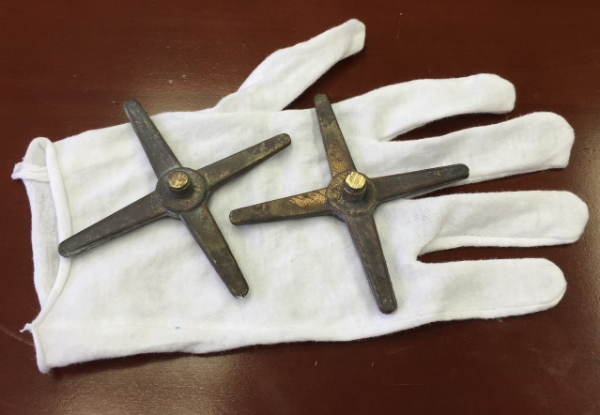It took about a year, but I have finally finished fabricating a Thomas Edison Manufacturing Company C-Frame blade assembly from scratch. This assembly was designed and manufactured from the ground up by myself and Todd Mann, an expert craftsman and member of the AFCA.
It all started with the generous lending of an original Thomas Edison fan blade by Chuck Abernathy. Chuck was kind enough to let me use his original blade to base my measurements off of. It took about a month to get my model where I wanted it, and then the blade was shipped back to Chuck. Thank you, sir! you are a very kind member of the AFCA.
Once I had a CAD model, the next step was creating a CAD model of the mold. This mold would be used to produce a wax pattern. Now is when Todd's expert craftsmanship comes in to the story. Using the CAD model for the mold that I produced, Todd painstakingly CNC machined both halves of the mold from brass stock. Wax was then injected into this mold producing a pattern for investment casting.
The pattern is dipped in refractory slurry to produce a shell. Once the shell is built up around the pattern (or multiple patterns), the pattern is melted out from inside of the shell. This loss of wax is why investment casting is often called "lost-wax casting."
Once the shell has had the wax pattern melted out of it, the shell is fired to produce a hard mold. Molten bronze is now poured into the mold to produce the final part. I painstakingly selected a specific grade of bronze which perfectly matched the color of the original Edison hub.
Now that the parts have been cast, it's time to perform the secondary machining. Todd shipped back the parts to me to complete this operation.
Last steps, cleaning up the cast hub, cutting the wings, and assembly.
For Sale
As a result of this hard work, I am offering for sale one Edison blade assembly to the antique fan collector community. Please check the store for more details.













